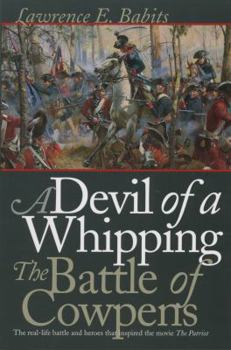Devil of a Whipping: The Battle of Cowpens
Select Format
Select Condition 
Book Overview
The battle of Cowpens was a crucial turning point in the Revolutionary War in the South and stands as perhaps the finest American tactical demonstration of the entire war. On 17 January 1781, Daniel Morgan's force of Continental troops and militia routed British regulars and Loyalists under the command of Banastre Tarleton. The victory at Cowpens helped put the British army on the road to the Yorktown surrender and, ultimately, cleared the way for American independence.
Here, Lawrence Babits provides a brand-new interpretation of this pivotal South Carolina battle. Whereas previous accounts relied on often inaccurate histories and a small sampling of participant narratives, Babits uses veterans' sworn pension statements, long-forgotten published accounts, and a thorough knowledge of weaponry, tactics, and the art of moving men across the landscape. He identifies where individuals were on the battlefield, when they were there, and what they saw -- creating an absorbing common soldier's version of the conflict. His minute-by-minute account of the fighting explains what happened and why and, in the process, refutes much of the mythology that has clouded our picture of the battle.
Babits put the events at Cowpens into a sequence that makes sense given the landscape, the drill manual, the time frame, and participants' accounts. He presents an accurate accounting of the numbers involved and the battle's length. Using veterans' statements and an analysis of wounds, he shows how actions by North Carolina militia and American cavalry affected the battle at critical times. And, by fitting together clues from a number of incomplete and disparate narratives, he answers questions the participants themselves could not, such as why South Carolina militiamen ran toward dragoons they feared and what caused the "mistaken order" on the Continental right flank.






